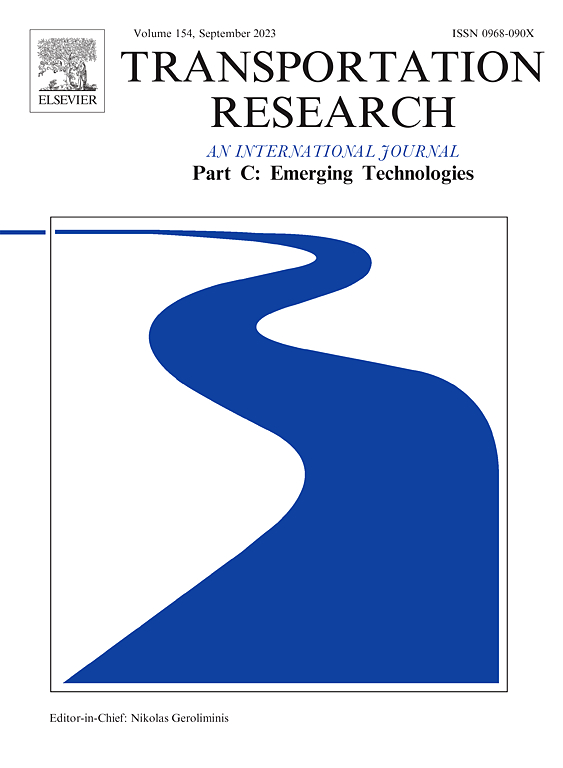Combining choice and response time data to analyse the ride-acceptance behavior of ride-sourcing drivers
IF 7.6
1区 工程技术
Q1 TRANSPORTATION SCIENCE & TECHNOLOGY
Transportation Research Part C-Emerging Technologies
Pub Date : 2025-02-01
DOI:10.1016/j.trc.2024.104977
引用次数: 0
Abstract
This paper investigates the ride-acceptance behavior of drivers on ride-sourcing platforms, considering drivers’ freedom to accept or reject ride requests. Understanding drivers’ preferences is vital for ride-sourcing services to improve the matching of requests to drivers. To this end, we obtained a unique dataset from a major ride-sourcing platform in Iran. This dataset provides comprehensive details of driver and ride characteristics for both successful and unsuccessful matchings. We investigate the ride-acceptance behavior of drivers using a hierarchical drift–diffusion model, which captures the dependency between drivers’ choices and response times. This dependency implies that response time, in addition to the request acceptance or rejection decision, contains valuable information about drivers’ preferences which allows us to better comprehend drivers’ ride-acceptance behaviors. Furthermore, we conduct a thorough comparison between the drift–diffusion model and the logit model, considering their predictive ability, parameter estimates, and elasticities. Within the drift–diffusion model framework, we also derive time-dependent elasticities of acceptance probability and elasticity of drivers’ response times. Our results demonstrate that ride fare, ride duration to request origin, and rainfall volume have the most impact on drivers’ ride-acceptance decisions. The insights derived from this study can be utilized to enhance platform matching algorithms and strategies, thereby improving the efficiency of ride-sourcing platforms.
求助全文
约1分钟内获得全文
求助全文
来源期刊
CiteScore
15.80
自引率
12.00%
发文量
332
审稿时长
64 days
期刊介绍:
Transportation Research: Part C (TR_C) is dedicated to showcasing high-quality, scholarly research that delves into the development, applications, and implications of transportation systems and emerging technologies. Our focus lies not solely on individual technologies, but rather on their broader implications for the planning, design, operation, control, maintenance, and rehabilitation of transportation systems, services, and components. In essence, the intellectual core of the journal revolves around the transportation aspect rather than the technology itself. We actively encourage the integration of quantitative methods from diverse fields such as operations research, control systems, complex networks, computer science, and artificial intelligence. Join us in exploring the intersection of transportation systems and emerging technologies to drive innovation and progress in the field.

 求助内容:
求助内容: 应助结果提醒方式:
应助结果提醒方式:


